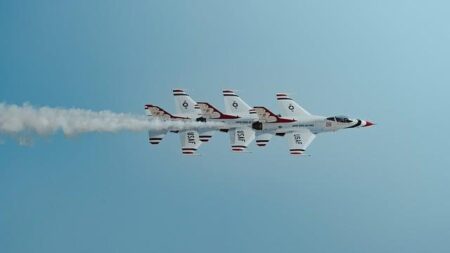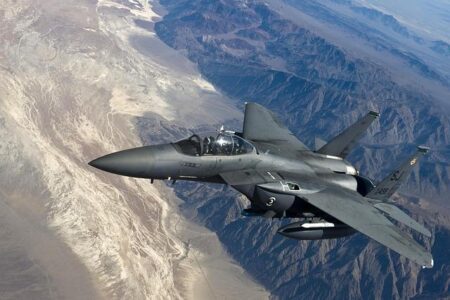Tensions between China and Japan continue to simmer, driven by deep-rooted historical grievances, ongoing territorial disputes in the East China Sea, and a rising wave of nationalism on both sides-making a swift resolution seem increasingly unlikely
Browsing: Regional Security
Estonia has launched construction on its very first bunker, marking the beginning of an ambitious project to create a 600-strong Baltic wall along the Russia border. This powerful barrier aims to bolster defenses amid rising regional tensions
Clashes along the Thailand-Cambodia border have intensified sharply, with both sides locked in fierce gunfire amid longstanding territorial disputes. The France 24 report highlights the rising tensions and calls for urgent diplomatic action to prevent the conflict from spiraling out of control
Japan’s Defense Ministry has unveiled a dramatic spike in intense air operations launched by a Chinese aircraft carrier near its waters, heightening regional tensions. Tokyo urges Beijing to avoid provocative actions in the fiercely contested East China Sea
Tensions between Japan and China are soaring to unprecedented levels in 2026, raising alarm bells for risk managers across the globe. Major challenges like trade disruptions, escalating security threats, and mounting geopolitical instability in East Asia call for vigilant monitoring. Now more than ever, staying informed on these unfolding events is crucial
Chinese military aircraft locked their radar onto Japanese fighter jets during recent air patrols near disputed waters, sharply escalating regional tensions, Japan’s defense ministry revealed. This provocative move underscores the persistent security challenges gripping East Asia
Chinese fighters locked their radar onto SDF jets amid rising regional tensions, Japan’s defense ministry revealed. This daring action highlights China’s increasing military boldness as it asserts its presence near airspace controlled by Japan
FO° Exclusive: Tensions over Taiwan are skyrocketing, igniting a fierce rivalry between China and Japan. With military maneuvers intensifying and diplomatic clashes growing sharper, these neighboring giants edge closer to a potential showdown in the East China Sea
Australia is keeping a close eye on a Chinese naval task group moving through the Philippine Sea, highlighting escalating tensions in the region. This increased vigilance underscores mounting worries about Beijing’s expanding maritime influence
Turkey and NATO recently came together to strengthen security in the Black Sea, responding swiftly to recent attacks on Russia-linked vessels, Turkish Minute reports. These vital discussions aim to de-escalate rising tensions and protect peace throughout the region
India has strongly dismissed Pakistan’s claims of being denied airspace for its humanitarian aid to Sri Lanka, labeling them as “ridiculous.” Indian officials emphasized the smooth and uninterrupted transit of relief supplies, directly countering Islamabad’s assertions, NDTV reports
Rising China’s expanding influence is intensifying strategic tensions with a watchful Japan, igniting a fresh power race across East Asia. As regional uncertainty deepens, both nations are rapidly ramping up their military and diplomatic efforts
China’s Foreign Ministry has urged Japan to provide a clear explanation of its “so-called consistent stance” on Taiwan, delivering a sharp rebuke to Tokyo’s recent remarks. This call intensifies amid rising tensions in the Taiwan Strait, Xinhua reports
Japan is taking bold steps to ease rising tensions with China over Taiwan. Tokyo is urging all parties to open channels of dialogue and put regional stability first, calling on everyone to avoid any moves that could spark conflict, Reuters reports
Japan’s growing support for Taiwan has sparked a fierce backlash from China, sending diplomatic tensions soaring to unprecedented levels. Beijing views Tokyo’s stance as a bold challenge to its sovereignty, fueling nationalist passions and intensifying regional instability
U.S. and South American defense leaders united to confront urgent regional security challenges, showcasing the strength of collaboration against transnational threats and strengthening partnerships to enhance stability across the Americas, according to SOUTHCOM
China and Japan are locked in a high-stakes standoff over Taiwan, escalating tensions across the region. Both nations are testing boundaries in a dangerous game of brinkmanship, fueling fears of an imminent military clash
Tensions skyrocket as China vehemently denounces Japan’s increased military backing for Taiwan, deepening the diplomatic rift. This escalating conflict raises urgent regional security alarms amid growing U.S. involvement
Japan quickly scrambled warplanes after spotting a Chinese drone near a southern island close to Taiwan, intensifying regional security worries amid rising tensions between China and its neighbors, officials revealed
Israel maintains a powerful military presence in Southern Lebanon, intensifying its watch over the volatile border as tensions with Hezbollah escalate. This strategic posture underscores the ongoing security challenges gripping the region, France 24 reports




















